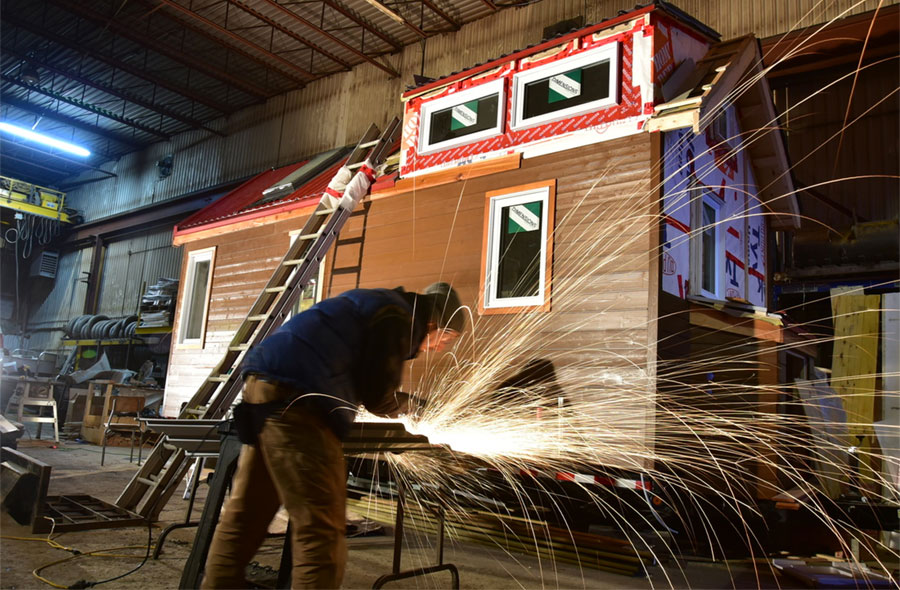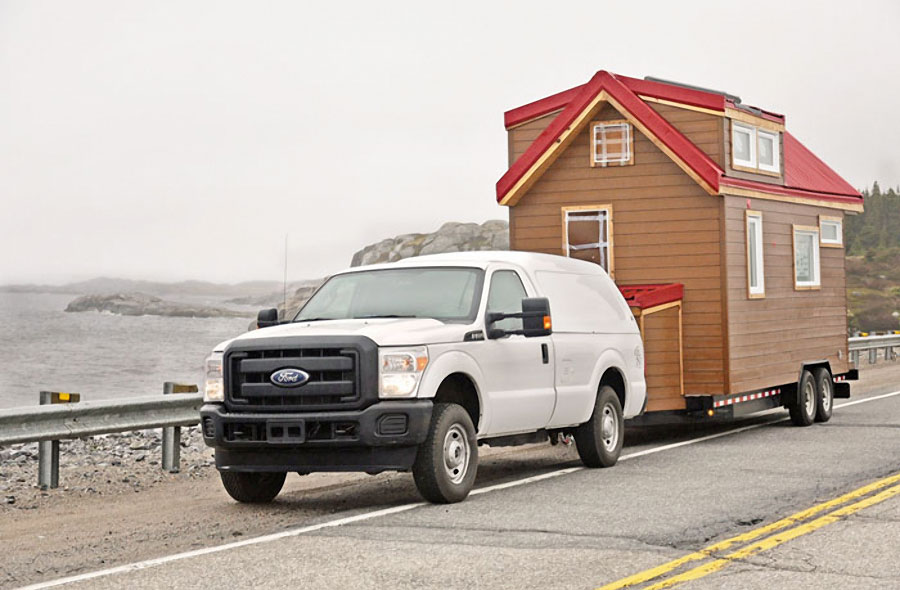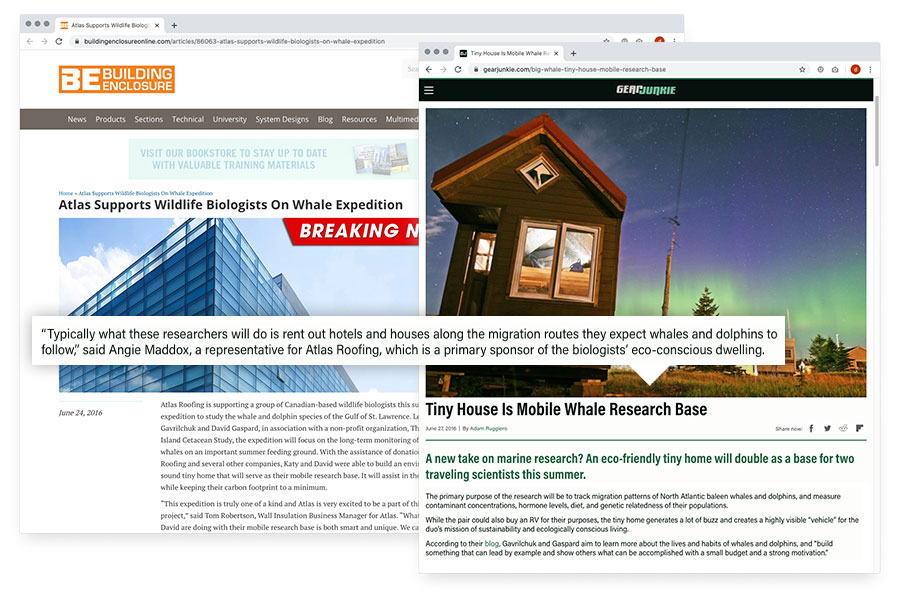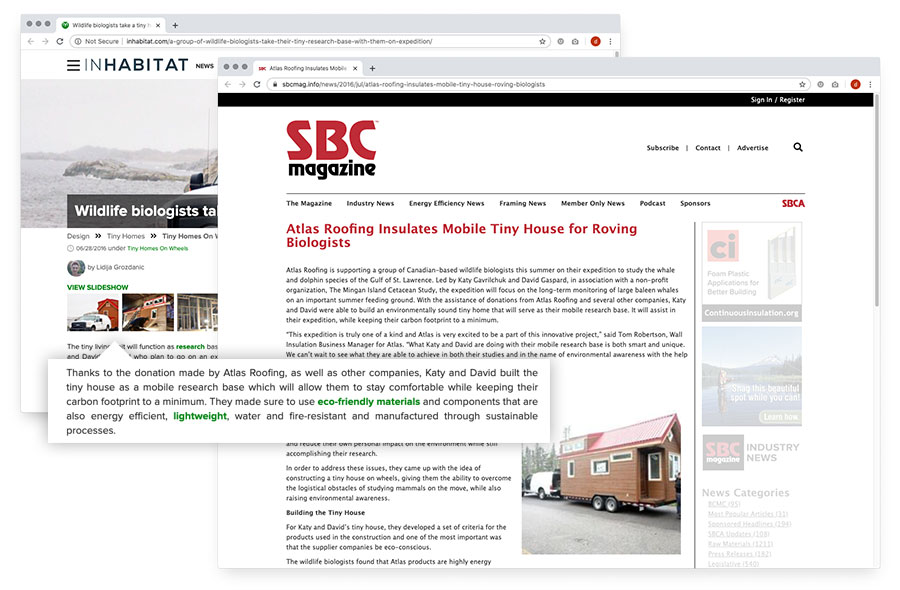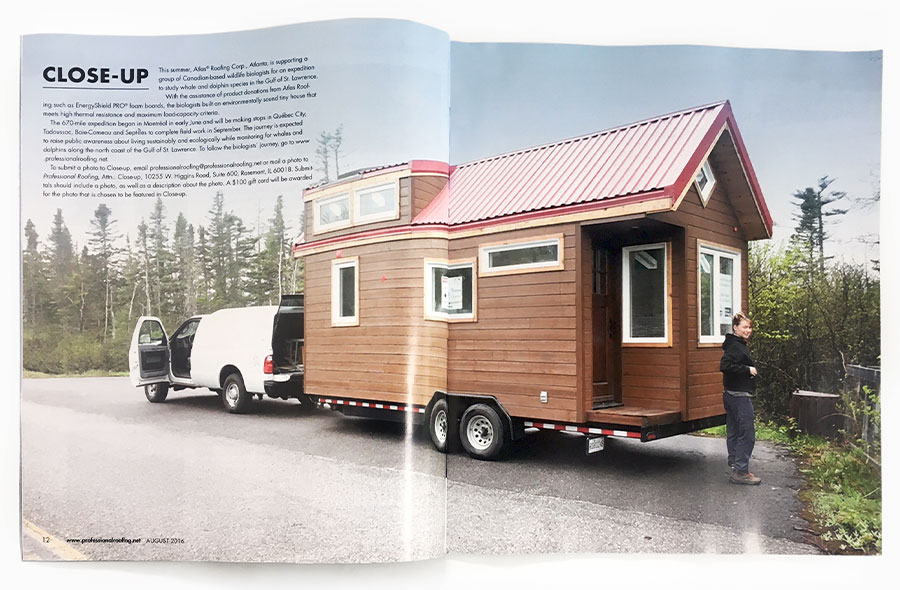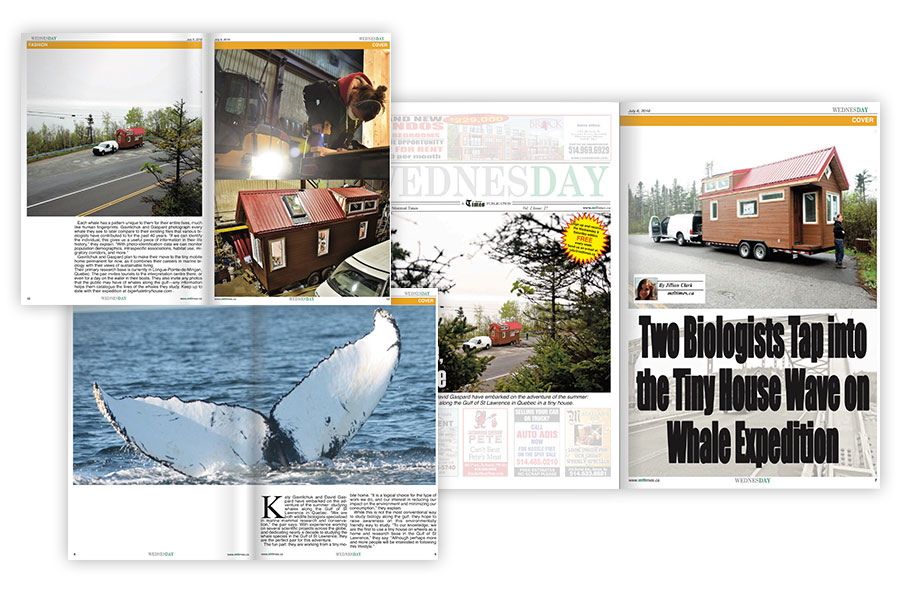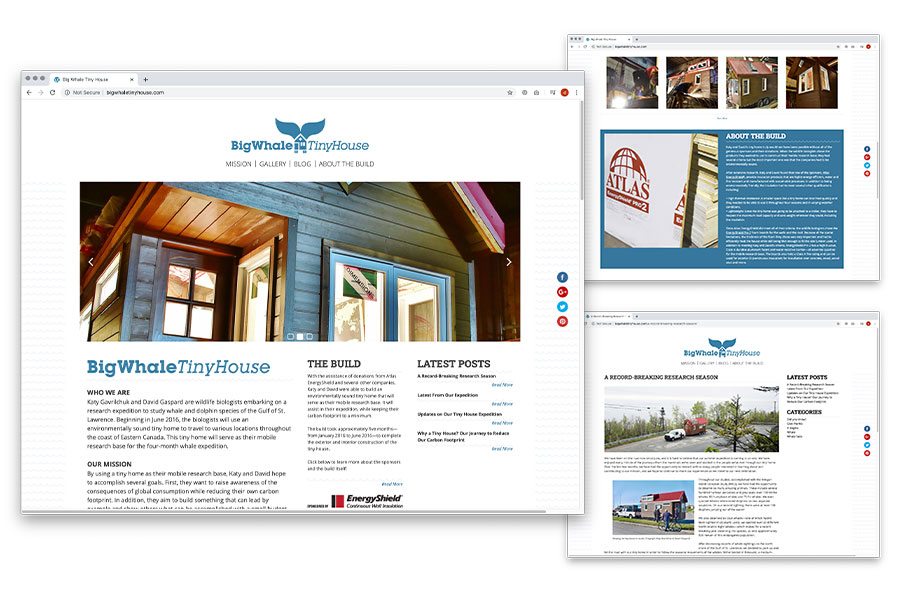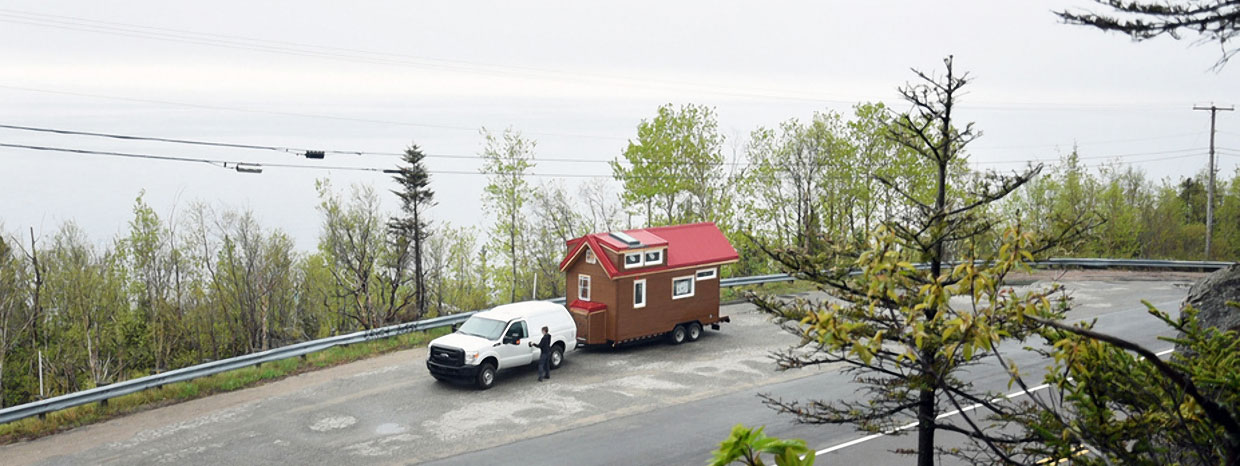
Project Challenge
Marine wildlife research in the Arctic and sub-Arctic presents scientists with a host of contradictions: meaningful work in a remote location; beautiful landscapes in a grueling environment; long periods of uneventfulness punctuated with sudden movements from unpredictable wild animals. Wildlife biologists Katy Gavrilchuk and David Gaspard have grown accustomed to these experiences, both stressful and gratifying, throughout their careers tracking marine life. Housing has always presented a particular challenge: the pair typically rented a house or cottage at each stop which ate into their budget and often placed them miles or hours away from their research sites. Before embarking on a new expedition to study whales in the Gulf of St. Lawrence in Northeastern Canada, Katy and David decided to build a mobile research station. This would enable the biologists to reduce their living costs and limit their carbon footprint, while maximizing the flexibility required by their research.
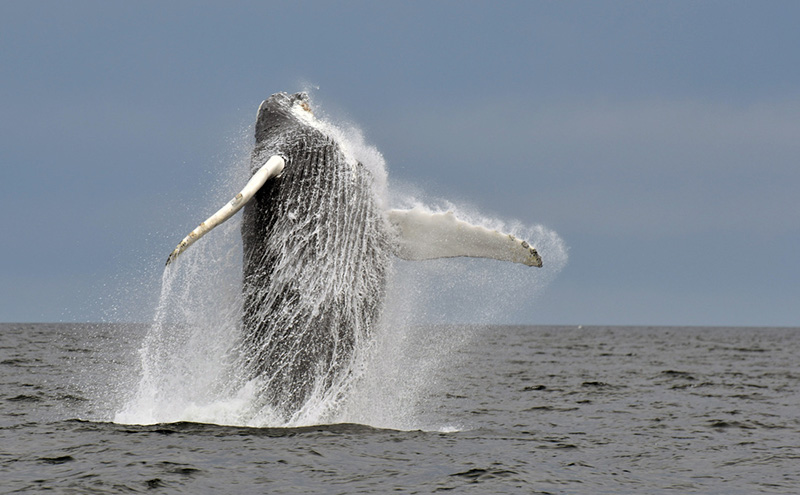
Tiny House, Big Impact
For the 2016 research season, Katy and David planned their most ambitious project yet—a 957 mile expedition from Montreal to the Mingan Peninsula to study dozens of native whale species. With plans to live and work from the Tiny House, the pair hoped to raise awareness about low-impact living while reducing their own carbon footprint. With the help of product donations from several leaders in green building, including EnergyShield continuous wall insulation from Atlas Roofing Corporation, they were able to get all of the products they needed to build their new energy-efficient mobile research base (AKA: The Tiny House).
Why EnergyShield® Polyiso Insulation From Atlas?
Katy and David had several criteria when selecting building products for their Tiny House, with environmental impact at the top of the list. Through their own independent research, they discovered EnergyShield products to be highly energy efficient, water and fire resistant, and manufactured with sustainable processes. They were further encouraged by the fact that EnergyShield can help builders earn LEED credits while meeting federal, state and local green building codes.
In addition to their environmental concerns, the biologists required an insulation that would provide high thermal resistance and be light weight. A smaller space can lose heat quickly, and the tiny house needed to be used through all four seasons and in varying weather conditions. The tiny house would be built on a trailer, so Katy and David faced weight restrictions for the structure itself—not to mention themselves and all their gear.
Atlas products are known for a fantastic ratio of thermal protection to weight, leading the biologists to choose the EnergyShield® Pro wall insulation boards for both the walls and the roof. Because of the interior space limitations of the tiny home, the thickness of the foam was very important to effectively insulate the tiny house and preserve interior space. EnergyShield® Pro 2 wall insulation features a high R-value, durable aluminum facers and a water resistive barrier—all helpful qualities for these wildlife biologists’ tiny house. In addition, the insulation boards provide a Class A fire rating and can be used in a variety of construction types.
Polyiso insulation also met Katy and David’s sustainability standards because it requires less raw material in production and less finished material in construction, thanks to its high R-value per inch. Atlas wall products have zero ozone depletion potential (ODP) and virtually no global warming potential (GWP).
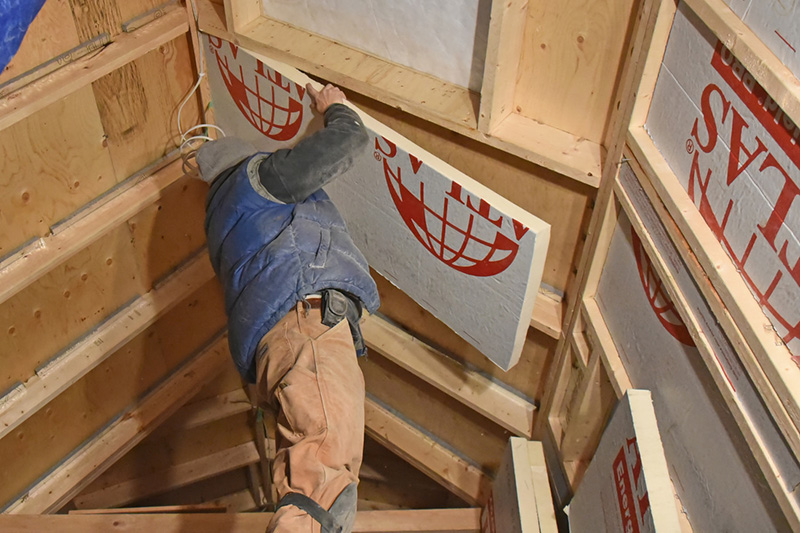
Tiny House Hits the Road
Katy and David’s 957-mile research trek took place from June to September 2016—beginning in Montreal and ending in the Mingan Archipelago in the Gulf of St. Lawrence, located in the northeastern tip of Quebec. Along the way, Katy and David taught community members about their expedition and sustainable living. They even gave tours of the Tiny House to the locals in towns along their route.
Thanks to the mobile research station, Katy and David devoted more time than ever to study various whale species. During their expedition, they spotted hundreds of whales, including 20 North Atlantic right whales, one of the most endangered whale populations in the world. In addition, they spotted six blue whales—one of which hadn’t been sighted in 20 years. Other animals included harbour porpoises, grey seals, minke whales, humpback whales and fin whales.
With the addition of the Tiny House, the wildlife biologists were able to take samples directly from the water into the dual purpose home-lab, without wasting time or risking potential contamination of the samples.
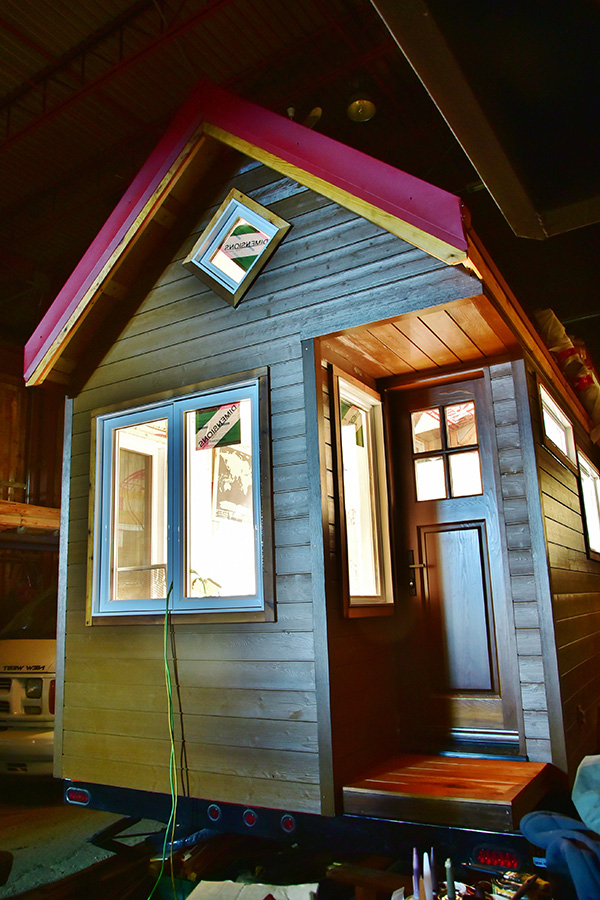
Impact
With the help of the Tiny House, Katy and David reduced costs and maximized their time spent researching endangered whale species. At the same time, they limited their own carbon footprint and helped educate the public on low-impact living, including the benefits of downsizing and the importance of energy efficient insulation.
Highlights from the Expedition:
- Traveled 957 miles
- Throughout their travels, the wildlife biologist met dozens of locals
- Conducted many tours of the Tiny Home to demonstrate low-impact living
- Spotted over 500 whales, including rare blue whales and North Atlantic right whales
- Took two different ferries with the Tiny Home to cross the Gulf of St. Lawrence
- Reduced energy consumption by using Atlas EnergyShield insulation
In the face of changing weather, the team hopes to get out on the water and continue their studies throughout the colder months. With well-insulated floors, walls and roof, thanks to Atlas EnergyShield, the mobile research base stays warm even when temperatures drop at night.

